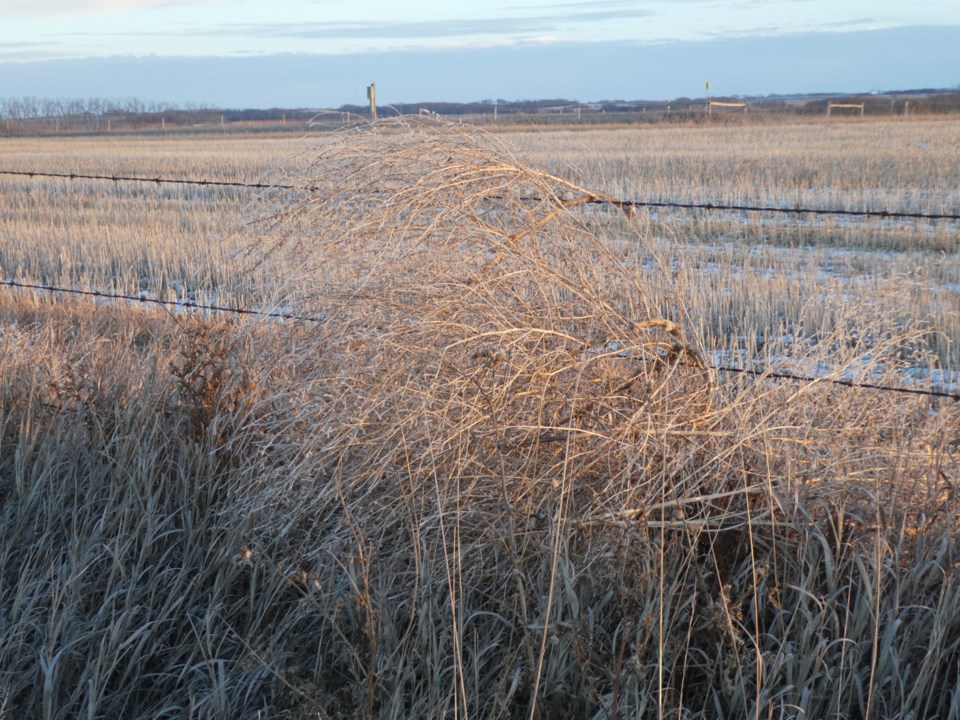YORKTON - You know how sometimes you get a song in your head and it seems to stay there all day?
I might be doing that to you right now: do you remember that great song “Tumbling Tumbleweeds”? It was recorded in 1934, imagine that, by the Sons of the Pioneers, a singing group with silky harmonies as beautiful as a starlit prairie sky.
And an interesting factoid, as of 2022, the group still exists with new faces and voices, and they perform in Branson, Missouri. They’re one of the longest continuously performing groups in country music history, and I have read that they still sing “Tumbling Tumbleweeds” as one of their signature songs at each performance.
Okay, wondering what that has to do with gardening? During various road-trips this fall, we noticed the abundance of tumbleweeds in ditches and caught in stubble in fields, something we haven’t seen so much of for a long time. So, time for some homework.
What exactly is a “tumbleweed”?
There are actually two culprits: It is the dried up plant of Russian thistle, salsola kali, and kochia, kochia scoparia. The Russian thistle seeds arrived North America in probably South Dakota in contaminated flax seeds from eastern Europe in the late 1800’s. Kochia was brought here to be used an as ornamental shrub.
Both these plants took to the new habitat well, can survive in dry conditions, so they not only survived but thrived, blowing across the prairies.
Both can do well in dry conditions, even germinating well and very quickly without the bonus of much water. Kochia is extra-tough because it will even grow in soils with a high level of salt. The plants of each can grow into a large clump, and when the thick, thorny plant breaks off at the root at maturity, it starts its journey with the wind.
As they blow around, they drop seeds. I read that the kochia plant can have up to 15,000 seeds, but the Russian thistle wins that contest by having up to 100,000 seeds per plant. Both types of plants are quite resistant to chemicals. But good news is that the seeds do not stay viable for much more than two years, so the problem can be managed with a watchful eye and timely action to destroy or prevent seed production of existing plants, even trapping the tumbleweed in shelterbelts.
Both of these plants are considered to be noxious weeds. What is a noxious weed? It is defined as “A noxious weed, harmful weed or injurious weed is a weed that has been designated by an agricultural or other governing authority as a plant that is injurious to agricultural or horticultural crops, natural habitats or ecosystems, or humans or livestock.”
(We’ve talked about noxious weeds before; some weeds might be pesky or persistent, but not considered noxious. But both kochia and Russian thistle are noxious.)
So now we know! And now… is that song running through your head? “I know when night has gone, That a new world's born at dawn, I'll keep rolling along, Deep in my heart is a song,
Here on the range I belong, Drifting along with the tumbling tumbleweeds.” Everybody sing!
The next meeting of the Yorkton and District Horticultural Society will be in March; visit our website at www.yorktonhort.ca for details. Our website also has photos and other items you might find interesting, so please visit!
Thank you to our friends at YTW for their great work every week. Stay warm and have a good week!






